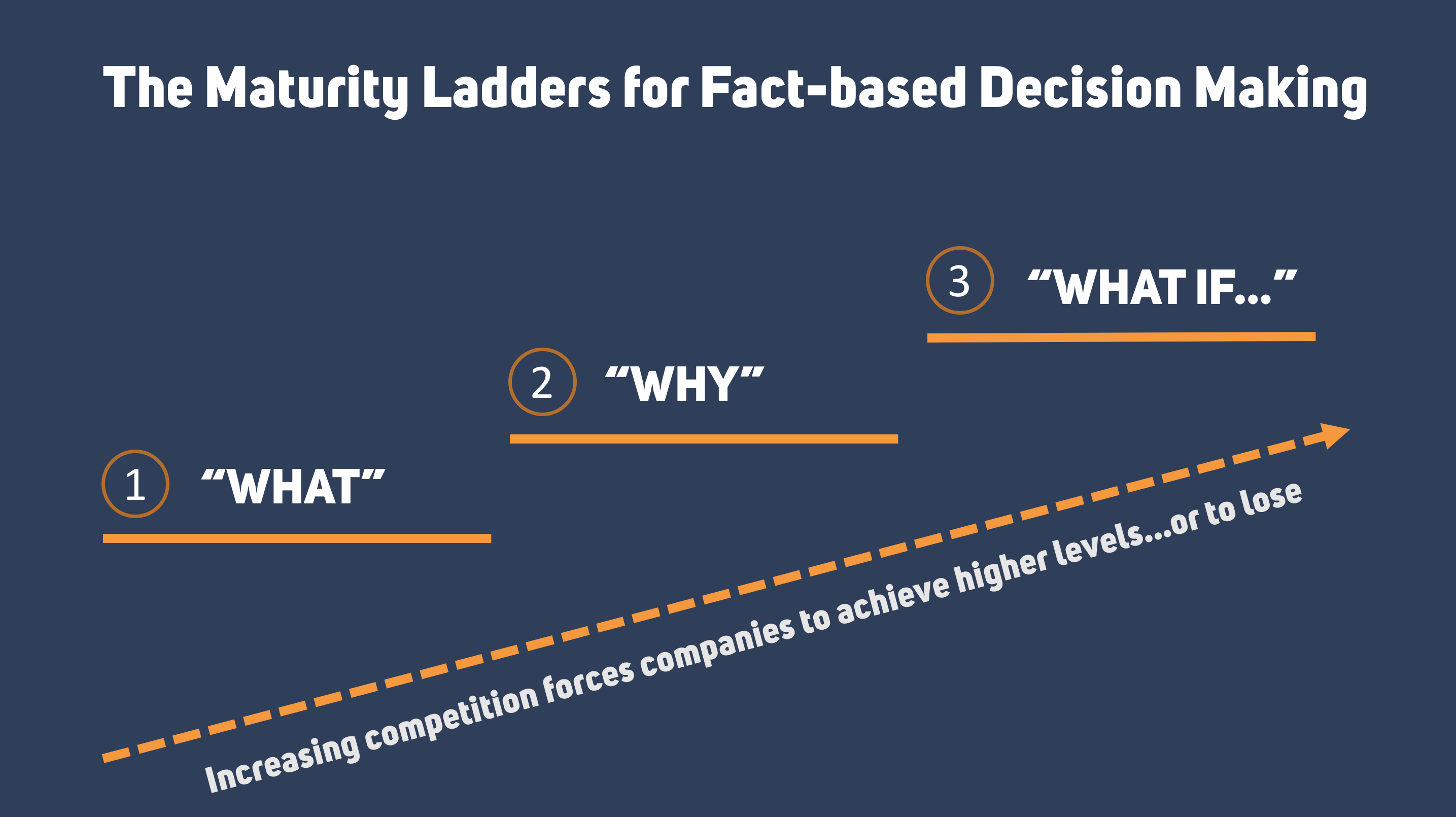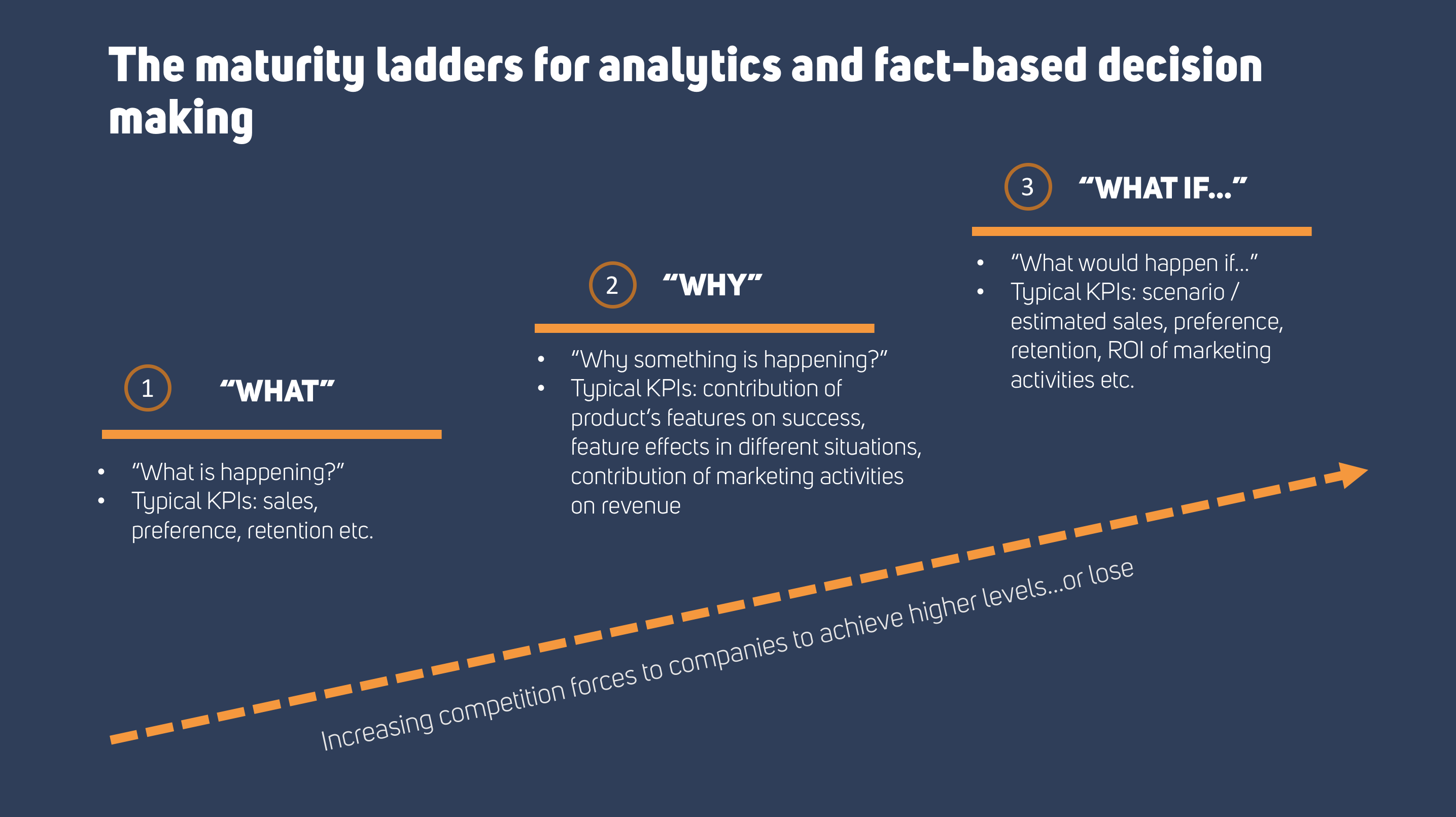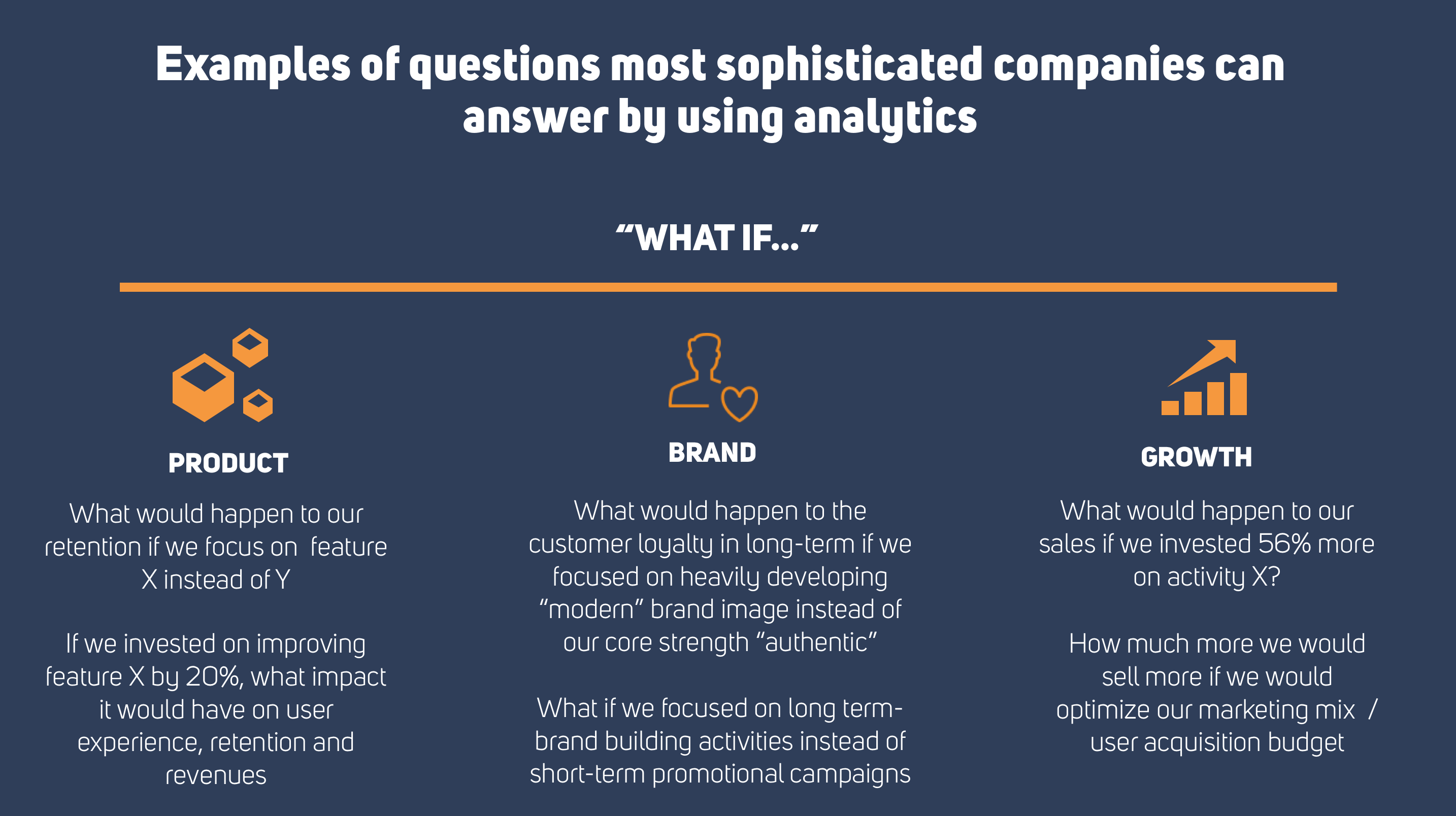In the real-world economy, a sharp focus on analytics and a commitment to optimize processes are what separates the leading companies from the also-rans. In the digital App Economy, the algorithm for success is no different. App companies, and especially those that produce games, must equip their teams to fight smart, not run their business blind. Building these capabilities helps a company to move one giant step ahead of the competition–and stay there.
As I pointed out in my recent talk at the Game Analytics and Business Intelligence Summit (London, September 22-23), achieving sustainable success is not a matter of chance or the outcome of some secret formula. Winning is about asking the right questions–at the right stages in your app lifecycle–and understanding how data helps you arrive at the best answers for your app or game every step of the way.
It’s not rocket science. From consumer packaged goods to consumer electronics, companies have come to understand that knowing the numbers that give them a snapshot of their business at that moment in time–sales, turnover, customer, retention–is not what they need to take their business to the next level.
In my talk, I refer to that as the stage where companies merely ask and answer the ‘what’ question–that is, what is happening now in my business. Asking ‘what’ yields an answer that is perhaps interesting, but not particularly insightful. Knowing how things are doesn’t say much about what a company–any company in any vertical–needs to do in order to build on its success, or avert a disaster if the numbers reveal sales or customer retention is in decline.
Why asking ‘what’ isn’t enough
Asking ‘what’ is what all companies do. App developers do it, too. They collect stockpiles of data and analytics around downloads of their app, user retention in their game, post-install events and metrics–and the list goes on. It’s data that answers the ‘what’ question, but this data alone won’t help the app developer to climb the ladder.
Simply put, a sharp focus on KPIs (answering the ‘what’ question) doesn’t provide you with a plan on how to get the most out of your game or app (and the investments that went into it). It’s a lot like looking in the rearview mirror, when we all know it’s better to focus on the road ahead.
Taking your app to the next level, and keeping ahead of your rivals, requires you to ask and answer the ‘why’ question. For example, ‘why is my app succeeding or failing when it comes to attracting and keeping users in the game?’
Asking ‘why’ allows you to pinpoint your game’s weaknesses–or strengths–and make the necessary improvements to stay that all-important step ahead of competitors in the hotly contested and crowded app marketplace.
My past experience consulting with blue-chip companies to optimize their brands, services, and products shows that companies that grasp the opportunity and wield analytics to improve how they make business decisions don’t just achieve success. Many, like Amazon and Google, have dominated their industries.
Likewise, in the case of apps (and especially games), it’s the companies that climb that ladder, and are at the stage in their app business where they can ask and attempt to answer the ‘why’ question, that have a kind of first-mover advantage. This focus allows them to have the edge over rivals who are still at the stage where they watch their KPIs like a hawk but lack the vision to harness analytics in order to truly improve decision-making.
Fact-based decision making for your game
App developers face a flood of decisions. If you are launching a game or improving an existing one, you have to make decisions about what to add and what to avoid in order to deliver a great user experience and keep players coming back for more. If you make these decisions based on a ‘gut feeling’ you could be lucky and make the right decision for your app and your audience. But it can also go the other way. You could just as easily make the wrong decision as a result of relying on feelings, not facts.
To identify the key improvements you need to make in order to take your app or game from good to great, you need to move from crunching numbers (focusing on ‘what’) to harnessing analytics to make truly informed decisions (answering ‘why’). The stage after that is when you ask ‘what if’ and begin to explore what might happen if you frame the question in an entirely new way, and embrace analytics in a new way to find the answer.
If you have a game, ask yourself: Which are the features that are closely related to the success of companies and competitors in my genre? Where should I *really* focus efforts and investment in order to produce (or sustain) the hit potential of my app? Why and where are new features trending that I need to watch and what would be the probable outcome if I added the feature to my game? This is where GameRefinery comes in. Our data-driven analysis, which we arrive at by distilling the data contained in GameRefinery’s extensive database (analyzing the top 150+ features across to the top 200+ grossing apps, as well as another 500+ games outside the top-grossing list), allows us to identify and rank an extensive list of features and improvements that would significantly boost your game’s commercial potential. Further, to help you to climb the ladder we provide tools to run your what-if scenarios to help you to make the right, fact-based decisions.
Armed with the right analytics you can map out the path to move your game or app up the charts. Here is my checklist of 3 things to consider on the journey.
#1 Make informed decisions early in the game. Tougher competition in the app marketplace–particularly in the Games genre–also turns up the pressure on companies and studios to harness analytics earlier in the app lifecycle. Sure, you can launch a feature and then conduct A/B testing to determine whether it flies or fails with your audience. But it’s smarter, faster, and cheaper to examine analytics first, and then decide.
#2 Figure out what matters most. Be frugal. On the face of it, it may seem that the only way to ensure a great and consistent game experience is to test, measure, monitor, and optimize everything, all the time. But, in reality, that’s the best way to squander money, time, and resources you can’t afford. Instead, be smart about the features you implement and make this decision based on analytics that help you zero in on what really matters (and what will add incremental value to the user experience). Whether you want to boost engagement and retention (and we show that multiple PvP modes are a great way to increase user interaction with your game), or just maximize the ROI of your user acquisition activities, harnessing analytics will allow you to benchmark your app and budget your resources.
#3 Get to love your data people. The games industry is an industry, and industries are dominated by companies that wield analytics to win. Top game companies need little convincing. In many cases, they are hiring more data scientists than UX/UI designers. Should data scientists be embedded in-game teams? It’s up to you really. But even if you keep your data scientists and designers in different teams, you have to tear down the barriers and remove the silos that keep them apart. Don’t limit your data scientists to crunching and reporting numbers. Promote them to ‘problem solvers’ and free them to help you find the right answers.
You have tough decisions to make in a market where the competition is even tougher. Asking ‘what’ will give you a view into how things are, but not equip you to climb the ladder to success. For that, you must harness analytics to help you model outcomes and power decision-making that will allow you the architect a strategy to achieve your business objectives. It’s all about learning to be an ‘analytics champion’ and reaching this level allows you to unlock your game’s true potential and ‘superpowers’.
**************************
Throughout his career, Veli-Pekka has been passionate about BI, analytics, and machine learning and helping companies harness them to make better decisions. As a Co-Founder of GameRefinery VP is able to combine this passion with his life-long interest and love of games. The result is what he calls the “perfect job,” one that brings together his passions and talents to benefit app developers. He has also used his advanced data-crunching methods to harness data to predict Alzheimer’s disease cases more accurately. On a wider scale, he has applied his knowledge to finding ways to understand and prevent currency crises more effectively, and to form advanced quantitative trading strategies for Forex and stock markets.























